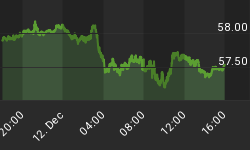The dollar drops to fresh 2-year lows against the euro, on the combination of pre-job reports jitters and pre-holiday thinning trading volumes. The slight increase in US weekly jobless claims rose from 310K to 321K is firmly placing the focus on tomorrow's jobs reports, which may be expected to deliver further disappointment following the employment components of the services and manufacturing ISM. Today's FX moves remain largely euro specific as the currency rallies from all cylinders, including EURGBP exploiting the Bank of England's decision to hold rates unchanged.
Weak employment components
The employment component of the manufacturing ISM fell below the 50 figure in 5 out of the past 7 months, while the employment component of the services ISM fell to 50.8, the lowest level since July 2004. We expect non-farm payrolls to rise to 115K from 97K and the unemployment rate to rise to 4.6% from 4.5%, while average hourly earnings slowing to 0.3% from 0.4%. It has been little mentioned that the services ISM fell to 4-year low as the news was overwhelmed by the release of British sailors.
Watch the unemployment rate
For the data-watch Federal Reserve, the weakening of economic releases is growing less ambiguous, with rising inflation as the sole obstacle to a potential easing. Indeed, the real fed funds rate (Fed funds - Core PCE price index) has turned lower as a result of rising inflation. But it is worth noting the historical patterns indicating a decrease in inflation after the Fed began easing and not before. The Greenspan Fed had consistently cut rates during a rise in the unemployment rate. In the event that the unemployment rate climbs to 4.6% in Friday's report and payrolls remain below 115-120K, the bias story shall remain to the weak side. Perhaps the weather factor may help a recovery in March construction jobs following the loss of 62K jobs in February. Also, it's worth mentioning that the paltry reading of 97K jobs in March payrolls was aided by a 39k increase in government jobs, which was a highly unusual sizable increase in that sector. A pay back from government and construction jobs may be offset by one another, but the overall trend remains markedly down as indicated by the 3-month moving average in services, manufacturing and construction. It's also worth noting that there is one more employment report (April report) prior to the May 9 Fed meeting.
The inflation-targeting oriented Bernanke may be reluctant to ease rates until he sees firm evidence of acquiescent inflationary pressures. But the grim prospects for capital expenditures and doubtful assessment will for the US consumer will raise questions on the sustainability of the Fed's hawkishness.
Talking the talk without walking the walk
This week's decisions by the Reserve Bank of Australia and Bank of England to leave rates on hold further supports the notion that central banks are talking the inflation talk without walking the walk. The exception remains the ECB, which is the only central Bank in the G7 deemed to raise rates by 50 bps this year. This helps explains today's euro rally to 1.3442, and 159.39 yen (highest in 5 weeks).



















